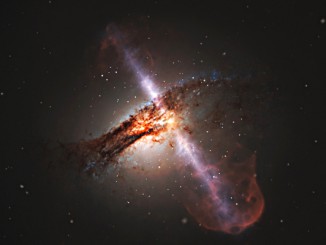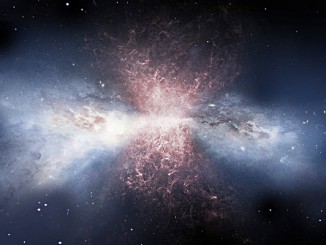
AGN


Seek out 3C 273, the brightest optical quasar, in the spring sky
Plumb the hidden depths of spring’s deep-sky by seeking out 3C 273, the optically-brightest quasi-stellar object (QSO) in the constellation of Virgo. Quasars are the intensely luminous centres of very distant and active galaxies, powered by a supermassive black hole. And don’t worry that you need a huge ‘scope to see it – a 15-cm (6-inch) instrument and a clear, moonless night are all you need.

Starvation diet for supermassive black hole dims brilliant galaxy
Astronomers may have solved the mystery of the peculiar volatile behaviour of a supermassive black hole at the centre of a galaxy known as Markarian 1018 some 590 million light-years away. Combined data from NASA’s Chandra X-ray Observatory and other observatories suggest that the black hole is no longer being fed enough fuel to make its surroundings shine brightly.

Telescopes combine to push frontier on galaxy clusters
Galaxy clusters are enormous collections of hundreds or even thousands of galaxies and vast reservoirs of hot gas embedded in massive clouds of dark matter. To learn more about clusters, including how they grow via collisions, astronomers have used some of the world’s most powerful X-ray, optical and radio telescopes. The name for this galaxy cluster project is the “Frontier Fields”.

Elegant spiral galaxy hides a hungry monster
NGC 4639 is a beautiful example of a type of galaxy known as a barred spiral. It lies over 70 million light-years away in the constellation of Virgo and is one of about 1500 galaxies that make up the Virgo Cluster. But NGC 4639 also conceals a dark secret in its core — a massive black hole that is consuming the surrounding gas and known as an active galactic nucleus (AGN).


Supermassive black hole blasts star-making gas from galaxy’s core
Many galaxies blast huge, wide-angled flows of material outward from their centres, pushing to their outer edges enough dust and gas each year that otherwise would have formed more than a thousand stars the size of our Sun. A team led by University of Maryland scientists has found the driving force behind these massive molecular outflows.
